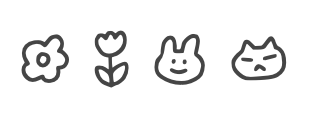function setup() {
createCanvas(1920,1080)
}
function draw() {
background(0);
fill(20);
ellipse(600,400,500,300)
ellipse(1320,400,500,300)
fill(40)
ellipse(600,400,400,290)
ellipse(1320,400,400,290)
fill(70)
ellipse(600,400,300,280)
ellipse(1320,400,300,280)
fill(110)
ellipse(600,400,250,270)
ellipse(1320,400,250,270)
fill(140)
ellipse(600,400,150,260)
ellipse(1320,400,150,260)
fill(240)
ellipse(600,400,90,260)
ellipse(1320,400,90,260)
fill(30)
ellipse(960,690,50,100)
fill(60)
ellipse(960,800,200,50)
var y = 260
var dir = 1
var speed = 50
function draw () {
fill (0)
ellipse(600, y, 30,30)
ellipse(1320, y, 30,30)
y += dir * speed
if (y<200) {
dir= -dir
}
if (y>600) {
dir= -dir
}
}
}
most challenging is calculate the position
![[OLD SEMESTER] 15-104 • Introduction to Computing for Creative Practice](../../../../wp-content/uploads/2023/09/stop-banner.png)

